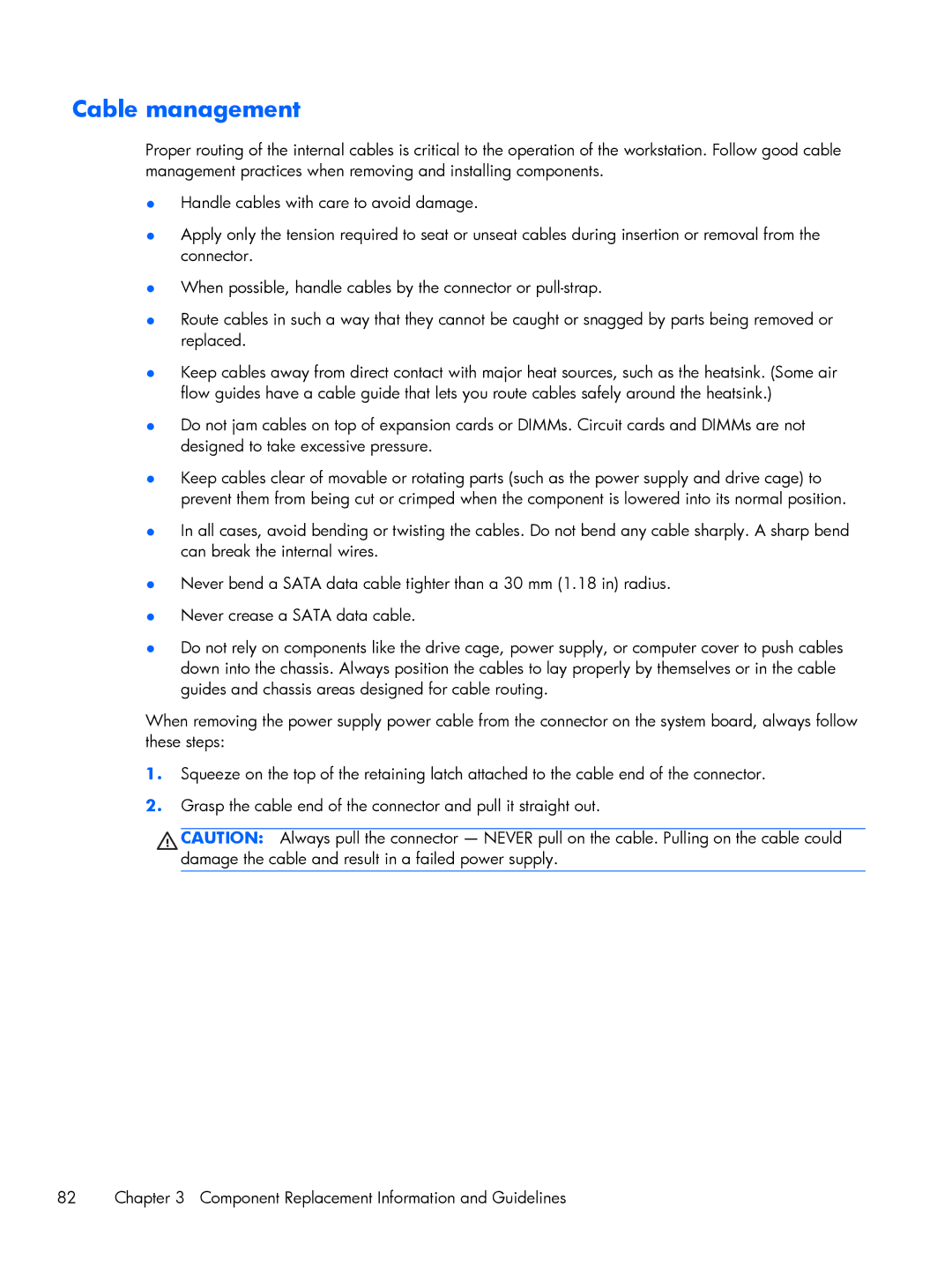Cable management
Proper routing of the internal cables is critical to the operation of the workstation. Follow good cable management practices when removing and installing components.
●Handle cables with care to avoid damage.
●Apply only the tension required to seat or unseat cables during insertion or removal from the connector.
●When possible, handle cables by the connector or
●Route cables in such a way that they cannot be caught or snagged by parts being removed or replaced.
●Keep cables away from direct contact with major heat sources, such as the heatsink. (Some air flow guides have a cable guide that lets you route cables safely around the heatsink.)
●Do not jam cables on top of expansion cards or DIMMs. Circuit cards and DIMMs are not designed to take excessive pressure.
●Keep cables clear of movable or rotating parts (such as the power supply and drive cage) to prevent them from being cut or crimped when the component is lowered into its normal position.
●In all cases, avoid bending or twisting the cables. Do not bend any cable sharply. A sharp bend can break the internal wires.
●Never bend a SATA data cable tighter than a 30 mm (1.18 in) radius.
●Never crease a SATA data cable.
●Do not rely on components like the drive cage, power supply, or computer cover to push cables down into the chassis. Always position the cables to lay properly by themselves or in the cable guides and chassis areas designed for cable routing.
When removing the power supply power cable from the connector on the system board, always follow these steps:
1.Squeeze on the top of the retaining latch attached to the cable end of the connector.
2.Grasp the cable end of the connector and pull it straight out.
CAUTION: Always pull the connector — NEVER pull on the cable. Pulling on the cable could damage the cable and result in a failed power supply.
82 | Chapter 3 Component Replacement Information and Guidelines |
